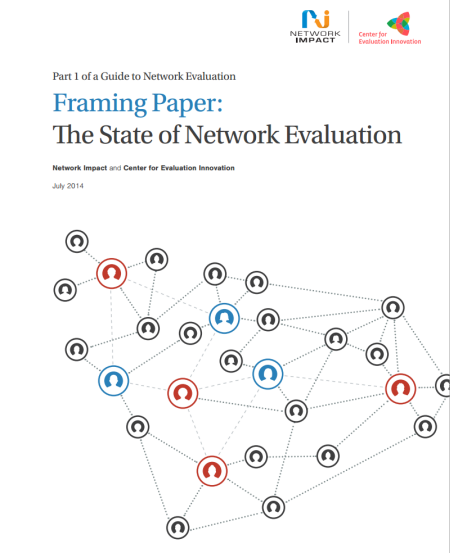Note from Beth:I met Madeleine Taylor back in 2009 while I was Visiting Scholar at the David and Lucile Packard Foundation. This was fairly early in the Foundation’s exploration of networks and Madeleine came in to discuss her approach to evaluating networks. We draw a lot of network depictions on napkins and had an amazing conversation. I captured it in this blog post. Fast forward five years, Madeleine has published a new guide on evaluating networks. She kindly wrote this guest post about it.
A Guide to Evaluating Networks – Guest Post By Madeleine Taylor
Over the past decade working with social change networks, I’ve seen an evolution. As anyone following Beth’s blog knows, building networks in the nonprofit sector for the purpose of achieving outcomes together has become increasingly common, especially when what is involved are complex problems that no single organization can solve alone. All of this activity is yielding new knowledge about how to build and support effective networks as practitioners and funders report on their insights and struggles. We now have thoughtful responses to evaluative questions such as:
- What are key factors for success in building a network?
- What should funders support—and not support—when they design grants to networks?
- How can network builders and funders tell how well a network is doing?
In response to growing interest among from grantmakers, practitioners and evaluators about how develop a network assessment that is systematic, practical, and focused on a network’s unique capabilities, my firm Network Impact partnered with the Center for Evaluation Innovation (CEI) to develop a two-part guide to Network Evaluation. The guide consists of a “State of Network Evaluation” framing paper about network evaluation and an accompanying network evaluation casebook to gather and share information about evaluation approaches, methodologies, and tools that are particularly suited to the assessment of networks. The guide can be downloaded at http://www.networkimpact.org/network-evaluation-guide/ .
Real network examples
We began the project with an extensive document and literature review of different types of networks and their evaluations, both domestically and internationally, as well as interviews with funders, network practitioners, and evaluation experts. This led us to some of the real-life examples of funder-supported evaluations that we’ve included in the casebook “Evaluating Networks for Social Change: A Casebook.” Producing a casebook with lots of “how to” detail was a priority of the project: it’s one thing to have a good general understanding of how to design a network evaluation and another to gather the necessary resources and expertise to implement one on the ground.
Three pillars of focus in network evaluation
The nine networks profiled in the casebook represent a variety of network types (networks at different stages of development, of different sizes and issue focus), illustrate a range of network evaluation methodologies, and are organized to reflect three basic areas of focus for a network evaluation: network connectivity, network health and network results.
In our state of the field framing paper, we call these the Three Pillars of Network Evaluation and offer guidance on the types of evaluation questions that can be pursued under each of the pillars and their sub-dimensions. A single evaluation may focus on one or more of the pillars at the same time, and several evaluations in the casebook do. The framing paper also includes a guide to evaluation questions that come up at different stages in a network’s development.
We are excited to share what have learned with the field and eager to hear from others who are building social impact networks. Please tell us about your triumphs and trials as you monitor and assess your network. You can reach me here.
Madeleine Taylor is the co-founder and CEO of Network Impact (NI). NI provides consulting, tool-building, and research services to support social-impact networks, foundations, and the emerging field of network builders.

